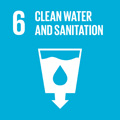- Docente: Dario Frascari
- Credits: 6
- SSD: ING-IND/27
- Language: Italian
- Teaching Mode: Traditional lectures
- Campus: Bologna
-
Corso:
Second cycle degree programme (LM) in
Chemical and Process Engineering (cod. 8896)
Also valid for Second cycle degree programme (LM) in Environmental Engineering (cod. 8894)
-
from Sep 23, 2024 to Dec 18, 2024
Learning outcomes
The course aims to provide knowledge regarding the main technologies for the treatment of wastewater, gas emissions, and solid waste, with reference to operating principles, selection criteria, and methods of design and verification.
Course contents
Recommended Prerequisites
Although there are no formal prerequisites, students enrolling in this course should be familiar with and able to use the fundamental concepts of general and organic chemistry, material balances, chemical kinetics, fluid motion in hydraulic circuits, and psychrometry.
All lectures will be held in Italian. Therefore, understanding the Italian language is necessary to successfully follow the course and use the provided teaching materials.
Course ProgramThe course program outlines the processes and technologies for the treatment of pollutants to protect the environment, primarily focusing on gaseous and liquid phases.
a) Wastewater Treatment
- Characteristics of domestic wastewater.
- Unit operations for wastewater treatment: preliminary treatments, sedimentation, aerobic and anaerobic biological treatment, nitrogen removal (nitrification/denitrification).
b) Air Emission Treatment
- Classification of pollutants present in gas streams.
- Gaseous pollutants: Technologiess for controlling emissions of gaseous pollutants, with particular focus on acid gases and SOx.
- Particulate matter: Technologies for controlling particulate emissions (cyclones, electrostatic precipitators, bag filters).
c) Solid Waste Treatment
- Introduction to waste-to-energy processes, including an overview of the processes and the generation of major pollutants.
Readings/Bibliography
Recommended books:
Cooper C. D., Alley F.C. “Air Pollution Control: A Design Approach”. 3rd Ed. Propsect Heights (IL): Waveland Press Inc, 2002.
Metcalf & Eddy, Inc. “Wastewater Engineering: Treatment and Resource Recovery” 5th Ed. Boston: McGraw-Hill, 2014.
Eckenfelder W. W., “Industrial Water pollution Control”. 3rd Ed. Boston: McGraw-Hill, 2000.
Teaching methods
Classroom lectures with slide presentations.
Exercises involving the sizing and verification of treatment plants for polluted effluents.
Assessment methods
The exam consists of a written test, which will include one or two problems involving the sizing of equipment for the treatment of wastewater, air emissions, or solid waste, along with some theoretical questions.
To pass the exam, the student must demonstrate a basic understanding of the operating principles, design criteria, and verification methods of the main equipment used for treating wastewater, air emissions, and solid waste.
Teaching tools
The course slides will be uploaded to the Virtuale platform in advance of the corresponding lectures.
The course also includes in-class exercises involving the sizing and verification of treatment plants for pollutant effluents. The exercise texts and solutions will be available on Virtuale.
Office hours
See the website of Dario Frascari
SDGs



This teaching activity contributes to the achievement of the Sustainable Development Goals of the UN 2030 Agenda.
